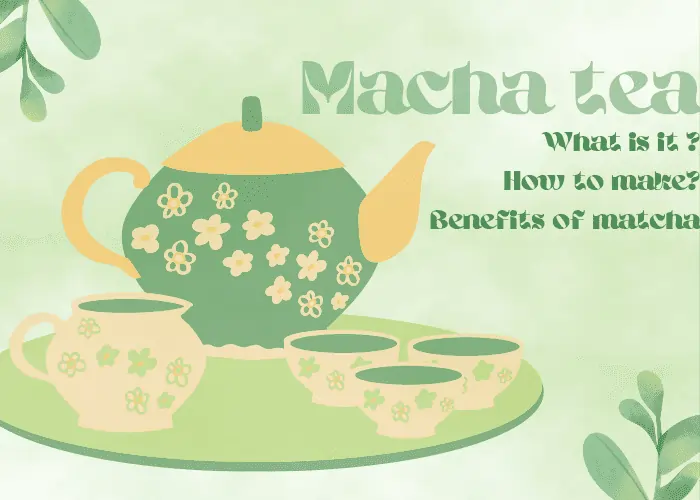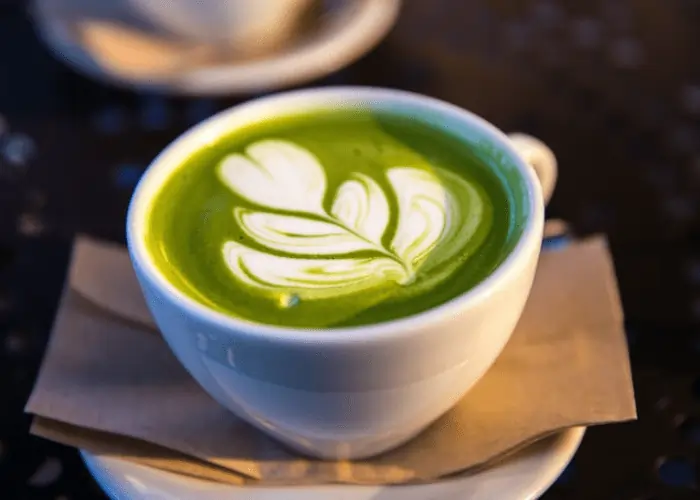
Macha or matcha tea whatever you call it. It is an especially grown and specially processed powdered green tea. It also calls Japanese green tea too because Japan produces the Macha for the first time and It is the largest Macha producer and exporter in the world.
Macha also comes from the same Camille Sinensis plant, but the thing that makes it different from others is the growing and processing method.
What is matcha tea? How it’s different?
It is a powdered green tea from Japan. Compared to normal green tea matcha green tea contains more antioxidants. The thing that makes it different from normal green tea is the processing and the growing method.
How is matcha tea made?
The Processing Method of macha is totally different. It’s grown and processed with care and love which gives it a pleasant taste.
To make ceremonial grade macha it is very important to pluck the leaves at right time in the right way. For ceremonial grade matcha, only the very first leaves of the plant are used, because it contains a higher concentration and nutrients that give the best quality.
Before plucking the leaves the plants go under shade for 30-40 days. It helps to preserve flavor, direct sunlight develops bitterness in the leaves so it is necessary to block that direct sunlight.
For ceremonial grade matcha, the tea plant spends 2x time more under the shade than normal macha. For normal macha, the tea leaves are harvested 2 to 3 times a year but ceremonial grade matcha is only harvested once.

The First step of processing matcha is to steam the fresh leaves to lock the flavor and bright green color and importantly to stop the oxidation.
After steaming the tea leaves go into the leaf spreader. A series of four mesh tubes where the tea leaves are rapidly cooled by the wind, the wind also eliminates the water from the leaves.
Then go for the next step, drying. The leaves dry in a furnace which gives them a unique roasted aroma. After drying the stems are removed and the leaves go for grinding. Ceremonial grades macha ground in the stone mill, this stone mill is designed to grind counterclockwise only. Stone mill turns The green leaves into powder and preserves the nutrients. Once Macha is grounded the fragrance starts to disappear slowly, so it’s very important to store them properly to preserve their flavor and fragrance.
How to make matcha tea
You can not make macha by dipping your tea bags there is a proper technique to make matcha tea.
The traditional way to make matcha tea
Traditionally matcha is made in a bowl with help of a bamboo whisker.
Things we need –
- Macha tea
- Bowl
- Whisk
How to prepare matcha green tea traditionally
- Preheat the bowl by adding boiling water to it then pour out the water.
- Take 1-2 spoons of matcha tea and sieve it into the bowl. (It’s an optional step to get rid of any lumps).
- Add 2 spoons of water and whisk it with the help of a matcha whisker.
- Add more water and again whisk it in a zigzag motion it will make your tea frothy.
- When it becomes frothy add milk and matcha milk tea ready.
Morden way to prepare macha tea
If you are lazy and do not want to do so much effort to make your macha here is a cheat tip to make your macha easily without doing any effort.
Things you need
- Macha tea
- Milk frother
How to make matcha tea in an easy way
Use a milk frother instead of a bamboo whisk. Take a bowl and add water and matcha tea powder and whisk it. Frother whisks the tea effortlessly and also warms it. When the temperature reaches about 80° Celsius turn off the milk frother and your matcha tea is ready.

Matcha tea vs green tea
Macha is also a type of green tea. But the thing that makes them different from each other is the growing and the processing method.
If we compare green tea and black tea manufacturing we do not find any special difference. The only difference is that green tea is not oxidized.
But if we talk about macha tea manufacturing we will see a lot of differences in growing the leaves to manufacturing. Like before plucking leaves for the matcha tea plants go under shade for 30to40 days then the plucking starts. But for the normal green tea, it is not required to give shade to the tea plant.
Shading helps to preserve the flavor and prevent bitterness that’s why macha is not tasted bitter but green tea does.
After steaming and frying macha is grounded by a stone mill which turns the leaves into a fine dust. But for green tea after steaming and we roll the leaves then dry them. For macha tea, we dry it before grinding but in green tea manufacturing, it is rolled before drying.
Due to the different manufacturing processes, there is also a huge difference between green tea and matcha teas` flavors.
Benefits of matcha tea
If we talk about the benefits of Macha green tea, it has a high level of antioxidants and chlorophyll than other teas because of its manufacturing process.
Here are some proven benefits of matcha tea
Good for liver
Studies show that matcha green tea can improve the health of nonalcoholic fatty liver due to the high amount of antioxidants.
Antioxidants help to scavenge the free radicals and maintain oxidative and antioxidative balance in our liver.
Consumption of matcha interrupts radical chain reactions by giving up some of their own electrons and trapping the free radicals.
Low caffeine
If you are a caffeine-sensitive person then matches tea can be a good friend to you due to its low cafeine content not only for caffeine sensitives, its also good for teaholics.
Caffeine can cause many problems like dizziness making you incredibly thirsty and also changing your alertness but if you drink matcha then you will not face any problems like this and also get other health benefits.
Reduce inflammation
Tea helps to reduce inflammation in our body with the help of its anti-inflammatory properties.
The catechin found in tea are a good source of antioxidants they help to protect the tissues from damage and prevent unwanted inflammatory response.
Antimicrobial
Tea gets its antimicrobial character due to the catechin present in it. EGCG and EGC are the catechins that are shown to exhibit the highest antimicrobial effect and slow down the growth of germs.
Good for skin
As I said tea possesses antimicrobial properties, it helps to treat acne and unclog pores.
The polyphenols present in tea act against infection and prevent breakouts and other infections of our skin.
Conclusion
Matcha is a Japanese green tea, increasingly getting popularity due to its unique taste and unbelievable health benefits.
We can categorize macha into two types culinary grade matcha and ceremonial grade matcha. But you can’t find any huge difference between these two. Both have almost the same benefits and taste. But the only thing that makes them different from each other is the plucking of leaves and the shading, for ceremonial matcha the leaves are only plucked once a year but for the culinary grade, it plucked 2-3time in a year which makes a little difference in quality and taste.

